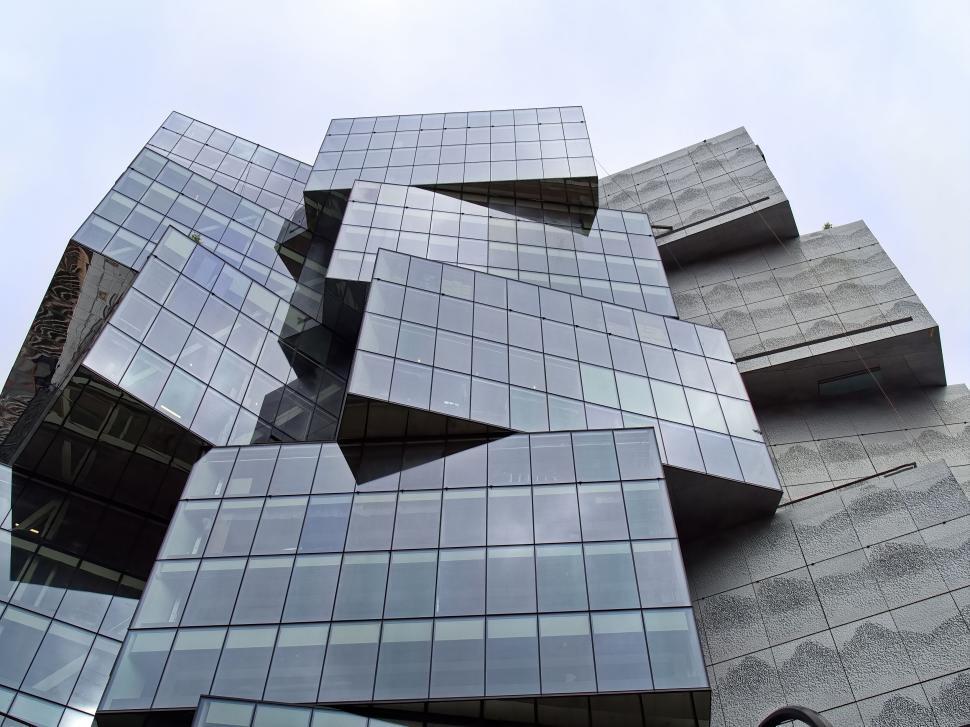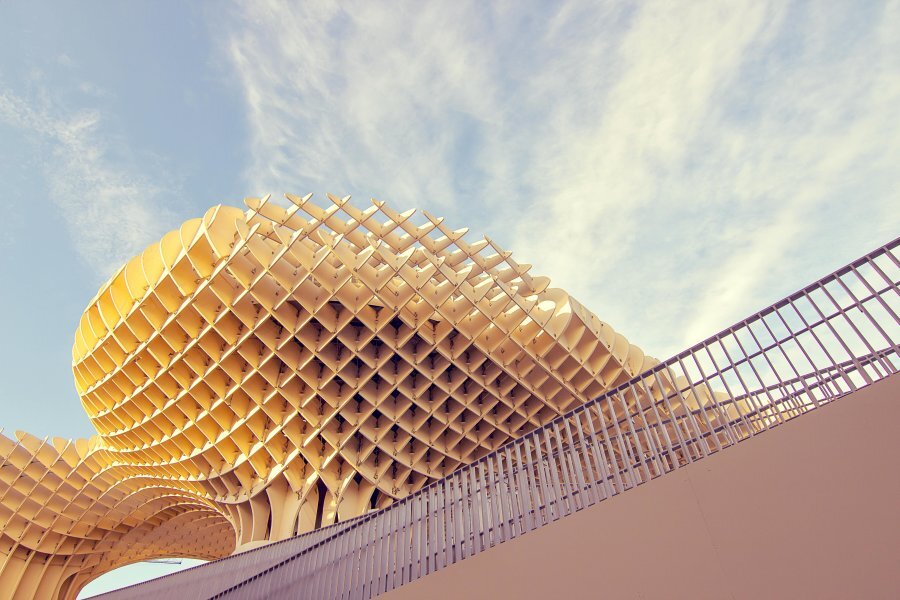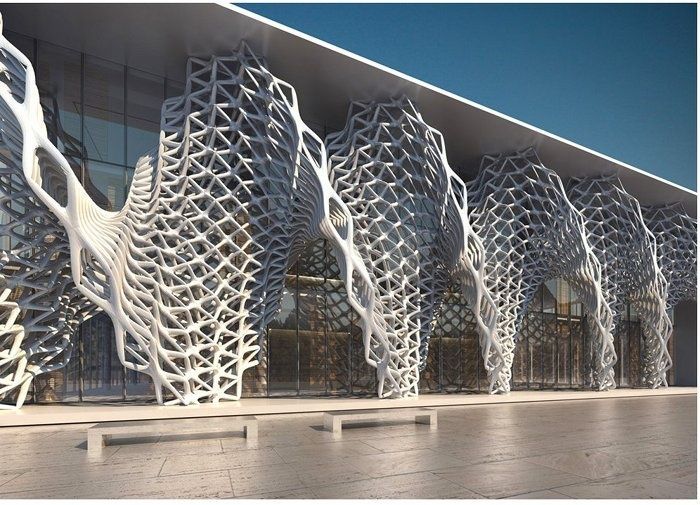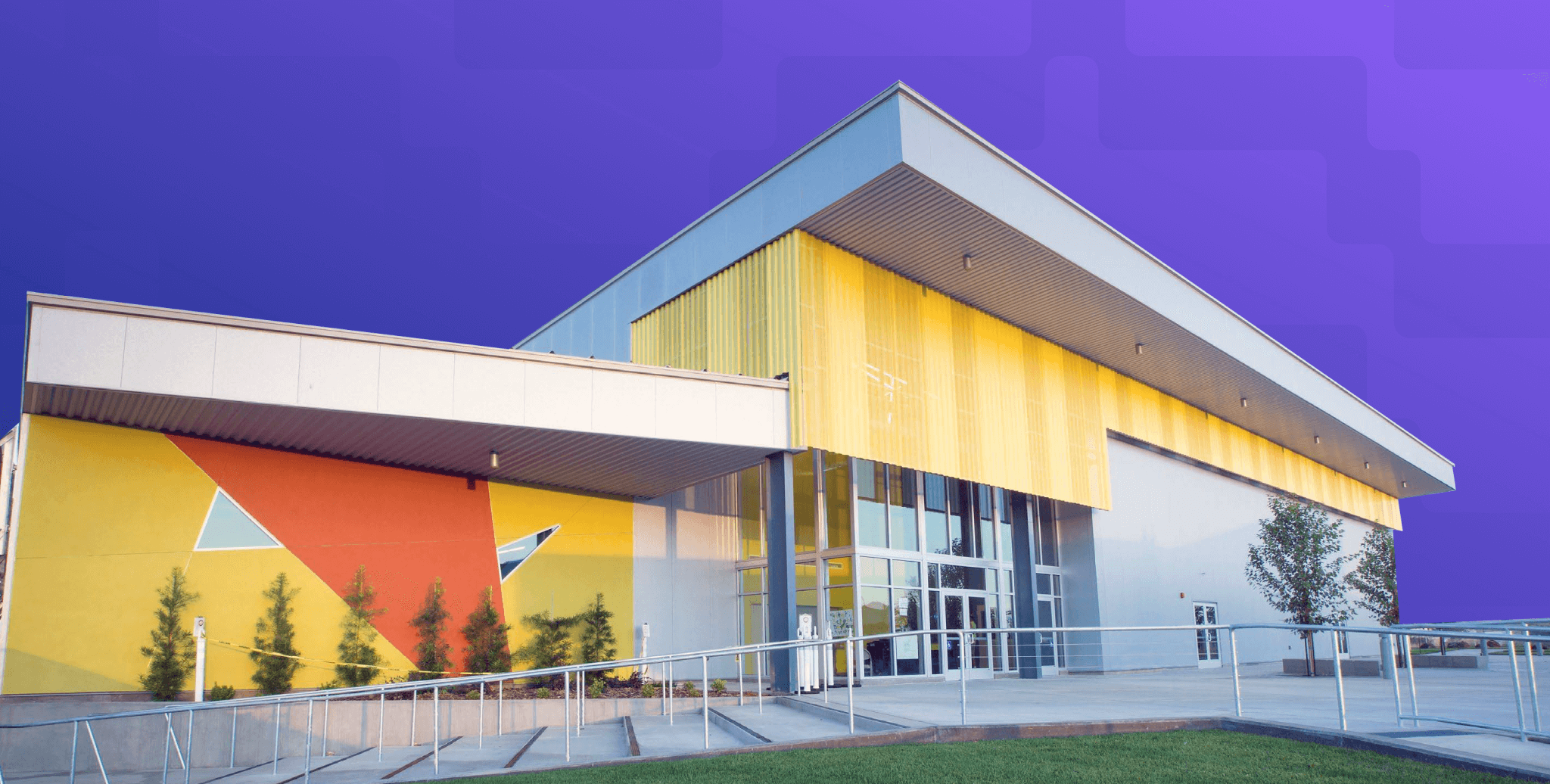How To design a unique Facade? Step by Step Process
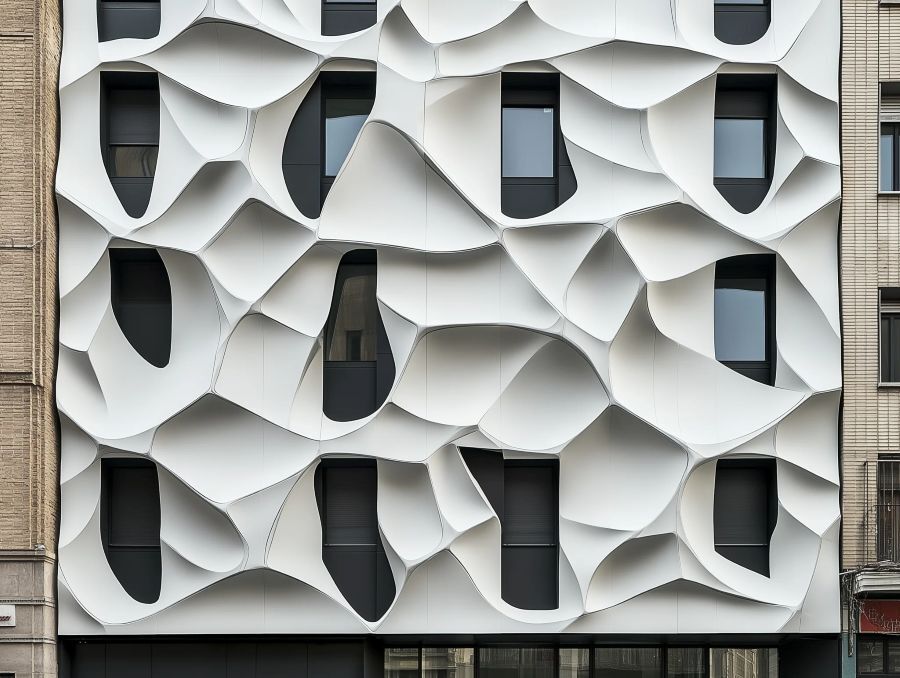
Table of Contents
If you're also wondering "How to design a unique Facade?". Let us tell you it starts with a clear understanding of both function and visual storytelling. A building’s exterior is more than a protective shell; it communicates identity, culture, and technological innovation.
According to Allied Market Research, the global facade market is projected to reach $589 billion by 2034, driven by the growing demand for sustainable and energy-efficient facade of buildings. With the right design strategies, architects can design facades that not only define urban landscapes but also enhance building performance and occupant comfort.
Key Principles of Designing an Impressive Facade
Designing an impressive facade requires a fine balance of aesthetics, sustainability, and structural efficiency, which can be achieved through the thoughtful integration of materials, design, and context.
A successful facade design should reflect these fundamental principles:
1. Contextual Harmony
The design facade building process begins with understanding the local context, climate, culture, and neighboring structures. A facade that responds to its surroundings enhances visual unity while standing out for its originality.
2. Material Innovation
The selection of architecture facade materials significantly influences both aesthetics and performance. Glass, aluminum composites, terracotta panels, and perforated metals are popular for modern designs due to their adaptability and sustainability. Using energy-efficient materials can also reduce the carbon footprint of buildings.
3. Functionality and Performance
An impressive facade design does more than look appealing; it regulates daylight, ventilation, and temperature. Incorporating smart shading systems or double-skin facades can enhance energy efficiency while maintaining visual dynamism.
4. Rhythm and Proportion
Visual rhythm, symmetry, and proportion help maintain coherence. Repetitive patterns or alternating modules can transform a simple surface into an expressive example of facade design pattern that gives the building its distinctive rhythm.
5. Technological Integration
Modern architecture leverages computational tools for precision and creativity. Parametric modeling, environmental simulation, and 3D visualization are now essential for those pursuing a career in facade designing, enabling them to create innovative and sustainable exterior systems. By understanding computational design, architects can see how these tools are transforming the conceptualization and execution of modern facade systems
Together, these principles guide architects in creating façades that are functional, expressive, and sustainable.
Step-by-Step Process To Create A Unique Facade
Designing a unique facade requires a systematic approach combining creativity, technology, and practicality. Here’s a detailed breakdown of the step-by-step process:
Step 1: Understand the Project Context
Start by analyzing the project’s site, function, and cultural context. Whether it’s a commercial tower or a residential block, understanding its surroundings helps shape a facade design that complements its environment while maintaining individuality.
Step 2: Define the Design Concept
Create a narrative that represents the building’s purpose. This concept acts as the backbone for every design decision, from materials to form. For example, a museum might use translucent glass to symbolize openness and discovery, while a corporate office could emphasize solidity through metal panels. Learning how to use parametric facade design tools helps facade designers test visual and structural concepts before finalizing the design direction.
Step 3: Choose Architecture Facade Materials
Selecting the right architecture facade materials is vital. Consider durability, thermal efficiency, and local availability. Combining glass with stone or metal can achieve a balanced look that is both modern and timeless. Adaptive materials like kinetic panels or smart glass can further enhance performance.
Step 4: Develop the Design Using Computational Tools
Modern architects rely on digital modeling platforms such as Rhino and Grasshopper to experiment with geometry and patterns. Using these tools allows professionals to test different design facade building variations and environmental responses. Those aiming for a career in facade designing benefit from mastering parametric modeling tools, which streamline this exploration phase.
Step 5: Prototype and Test the Facade System
Before implementation, prototype critical sections of the facade. This allows testing for thermal performance, acoustics, and light permeability. Simulation tools and digital fabrication techniques ensure precision and reduce design errors.
Step 6: Detail the Example of the Facade Design Pattern
Refine the example of facade design pattern chosen during modeling. Pay attention to joints, framing, and finishes. Subtle detailing often defines the difference between a visually strong facade and an average one.
Step 7: Integrate Structural and Environmental Systems
A well-designed facade seamlessly integrates with the structural framework and mechanical systems. Engineers and architects collaborate to ensure the facade supports load distribution, insulation, and energy efficiency without compromising aesthetics.
Step 8: Review, Refine, and Implement
Once the final prototype is approved, proceed with construction documentation. Coordination between designers, fabricators, and contractors ensures the facade is built precisely as envisioned. A distinctive facade transcends visual appeal, reflecting a thoughtful interplay of innovation, material insight, and environmental consciousness.
5 Real Life Examples of a Unique Facade
Innovative façades around the world showcase how creativity and technology converge in modern architecture. The following example of facade design pattern inspirations highlights this evolution:
1. Al Bahar Towers, Abu Dhabi
These towers feature a dynamic mashrabiya system that responds to sunlight intensity, reducing heat gain while creating a culturally inspired geometry.
2. One Central Park, Sydney
Integrating vertical gardens and reflective heliostat mirrors, this project merges ecology with architecture, redefining what sustainable facade of buildings can achieve.
3. The Gherkin, London
Known for its spiraling glass panels, this skyscraper optimizes airflow through its aerodynamic facade design, minimizing energy use.
4. Media-TIC Building, Barcelona
Its ETFE cushion facade adjusts transparency levels based on solar exposure, demonstrating material innovation and adaptability.
5. Harpa Concert Hall, Reykjavik
Designed with crystalline glass panels, this structure transforms with light and color, offering an artistic facade that expresses a building inspired by Iceland’s natural landscapes.
Also, Checkout most impressive facade designs around the world.
Each project exemplifies how architecture can merge creativity, technology, and sustainability to craft unique identities through facade expression.
Conclusion
Designing a unique facade merges art, engineering, and technology to create structures that inspire and perform efficiently. By analyzing context, developing strong concepts, and using the right architecture facade materials, architects can transform ordinary structures into visual landmarks. Whether refining a design facade building concept or exploring a new example of facade design pattern, maintaining environmental responsibility and innovation ensures lasting impact.
Professionals aiming to advance their career in facade designing can gain deeper skills in computational modeling and digital fabrication through the Master Computational Design by Novatr, designed to help architects master tools and processes for creating high-performance, future-ready facades.
Visit our resource page to get started and receive expert guidance on advancing your career.

 Thanks for connecting!
Thanks for connecting!
.jpg)

.png)
